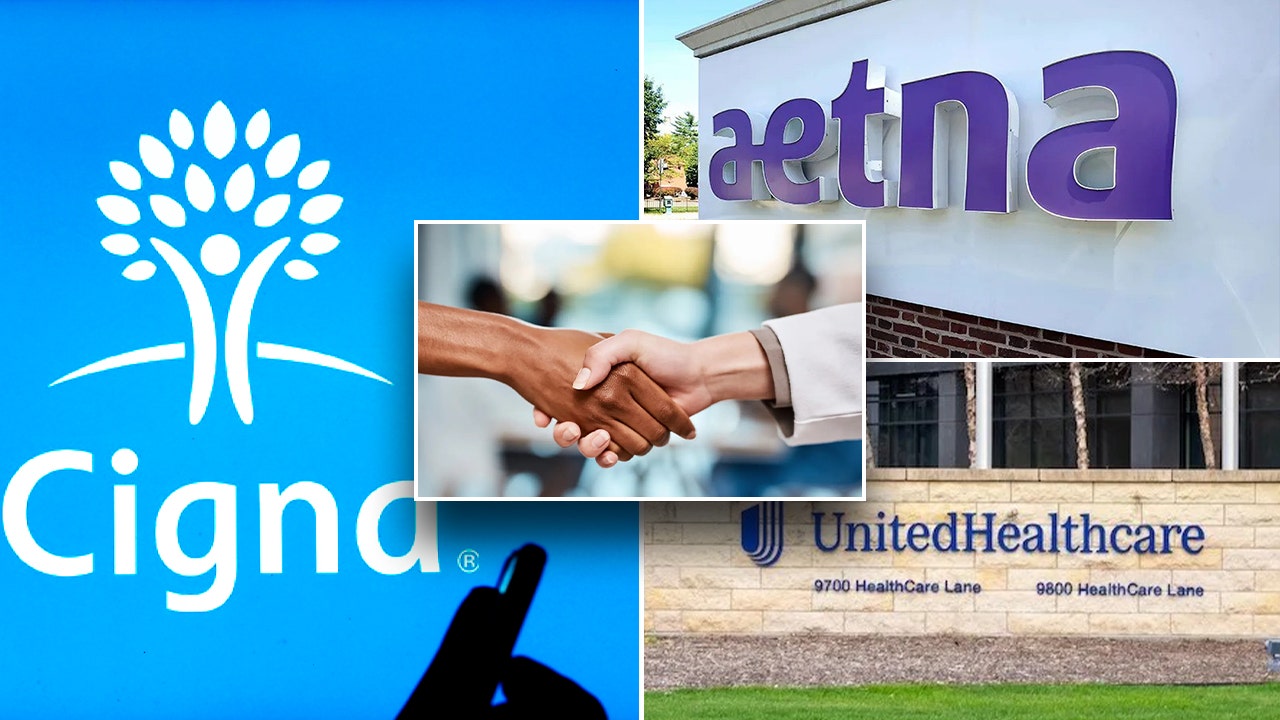Health
A Number That Should Guide Your Health Choices (It’s Not Your Age)

At her annual visit, the patient’s doctor asks if she plans to continue having regular mammograms to screen for breast cancer, and then reminds her that it’s been almost 10 years since her last colonoscopy.
She’s 76. Hmmm.
The patient’s age alone may be an argument against further mammogram appointments. The independent and influential U.S. Preventive Services Task Force, in its latest draft guidelines, recommends screening mammograms for women 40 to 74, but says “the current evidence is insufficient to assess the balance of benefits and harms of screening mammography in women age 75 years or older.”
Screening for colorectal cancer, with a colonoscopy or with a less invasive test, becomes similarly questionable at advanced ages. The task force gives it a C grade for those 76 to 85, meaning there’s “at least moderate certainty that the net benefit is small.” It should only be offered selectively, the guidelines say.
But what else is true about this hypothetical woman? Is she playing tennis twice a week? Does she have heart disease? Did her parents live well into their 90s? Does she smoke?
Any or all such factors affect her life expectancy, which in turn could make future cancer screenings either useful, pointless or actually harmful. The same considerations apply to an array of health decisions at older ages, including those involving drug regimens, surgeries, other treatments and screenings.
“It doesn’t make sense to draw these lines by age,” said Dr. Steven Woloshin, an internist and director of the Center for Medicine and Media at the Dartmouth Institute. “It’s age plus other factors that limit your life.”
Slowly, therefore, some medical associations and health advocacy groups have begun to shift their approaches, basing recommendations about tests and treatments on life expectancy rather than simply age.
“Life expectancy gives us more information than age alone,” said Dr. Sei Lee, a geriatrician at the University of California, San Francisco. “It leads to better decision making more often.”
Some recent task force recommendations already reflect this broader view. For older people undergoing lung cancer tests, for instance, the guidelines advise considering factors like smoking history and “a health problem that substantially limits life expectancy” in deciding when to discontinue screening.
The task force’s colorectal screening guidelines call for considering an older patient’s “health status (e.g., life expectancy, co-morbid conditions), prior screening status and individual preferences.”
The American College of Physicians similarly incorporates life expectancy into its prostate cancer screening guidelines; so does the American Cancer Society, in its guidelines for breast cancer screening for women over 55.
But how does that 76-year-old woman know how long she will live? How does anybody know?
A 75-year-old has an average life expectancy of 12 years. But when Dr. Eric Widera, a geriatrician at the University of California, San Francisco, analyzed census data from 2019, he found enormous variation.
The data shows that the least healthy 75-year-olds, those in the lowest 10 percent, were likely to die in about three years. Those in the top 10 percent would probably live for another 20 or so.
All these predictions are based on averages and can’t pinpoint life expectancy for individuals. But just as doctors constantly use risk calculators to decide, say, whether to prescribe drugs to prevent osteoporosis or heart disease, consumers can use online tools to get ballpark estimates.
For instance, Dr. Woloshin and his late wife and research partner, Dr. Lisa Schwartz, helped the National Cancer Institute develop the Know Your Chances calculator, which went online in 2015. Initially, it used age, sex and race (but only two, Black or white, because of limited data) to predict the odds of dying from specific common diseases and the odds of mortality overall over a span of five to 20 years.
The institute recently revised the calculator to add smoking status, a critical factor in life expectancy and one that, unlike the other criteria, users have some control over.
“Personal choices are driven by priorities and fears, but objective information can help inform those decisions,” said Dr. Barnett Kramer, an oncologist who directed the institute’s Division of Cancer Prevention when it published the calculator.
He called it “an antidote to some of the fear-mongering campaigns that patients see all the time on television,” courtesy of drug manufacturers, medical organizations, advocacy groups and alarmist media reports. “The more information they can glean from these tables, the more they can arm themselves against health care choices that don’t help them,” Dr. Kramer said. Unnecessary testing, he pointed out, can lead to overdiagnosis and overtreatment.
A number of health institutions and groups provide disease-specific online calculators. The American College of Cardiology offers a “risk estimator” for cardiovascular disease. A National Cancer Institute calculator assesses breast cancer risk, and Memorial Sloan Kettering Cancer Center provides one for lung cancer.
Calculators that look at single diseases, however, don’t usually compare the risks to those of mortality from other causes. “They don’t give you the context,” Dr. Woloshin said.
Probably the broadest online tool for estimating life expectancy in older adults is ePrognosis, developed in 2011 by Dr. Widera, Dr. Lee and several other geriatricians and researchers. Intended for use by health care professionals but also available to consumers, it offers about two dozen validated geriatric scales that estimate mortality and disability.
The calculators, some for patients living on their own and others for those in nursing homes or hospitals, incorporate considerable information about health history and current functional ability. Helpfully, there’s a “time to benefit” instrument that illustrates which screenings and interventions may remain useful at specific life expectancies.
Consider our hypothetical 76-year-old. If sh e’s a healthy never-smoker who is experiencing no problems with daily activities and is able, among other things, to walk a quarter mile without difficulty, a mortality scale on ePrognosis shows that her extended life expectancy makes mammography a reasonable choice, regardless of what age guidelines say.
“The risk of just using age as a cutoff means we’re sometimes undertreating” very healthy seniors, Dr. Widera said.
If she’s a former smoker with lung disease, diabetes and limited mobility, on the other hand, the calculator indicates that while she probably should continue taking a statin, she can end breast cancer screening.
“Competing mortality” — the chance that another illness will cause her death before the one being screened for — means that she will probably not live long enough to see a benefit.
Of course, patients will continue to make decisions of their own. Life expectancy is a guide, not a limit on medical care. Some older people don’t ever want to stop screenings, even when the data shows they’re no longer helpful.
And some have exactly zero interest in discussing their life expectancy; so do some of their doctors. Either party can over- or underestimate risks and benefits.
“Patients simply will say, ‘I had a great-uncle who lived to 103,’” Dr. Kramer recalled. “Or if you tell someone, ‘Your chances of long-term survival are one in 1,000,’ a strong psychological mechanism leads people to say, ‘Oh thank God, I thought it was hopeless.’ I saw it all the time.”
But for those seeking to make health decisions on evidence-based calculations, the online tools provide valuable context beyond age alone. Considering projected life expectancy, “You’ll know what to focus on, as opposed to being frightened by whatever’s in the news that day,” Dr. Woloshin said. “It anchors you.”
The developers want patients to discuss these predictions with their medical providers, however, and caution against making decisions without their involvement.
“This is meant to be a jumping-off point” for conversations, Dr. Woloshin said. “It’s possible to make much more informed decisions — but you need some help.”

Health
Single dose of 'magic mushrooms' provides 5 years of depression relief, researchers find

NEWYou can now listen to Fox News articles!
Psilocybin, the main psychoactive ingredient in magic mushrooms, could alleviate depression for at least five years after just one dose, according to a new study.
The research, presented June 18 at the Psychedelic Science 2025 conference in Denver, followed up with patients who had been diagnosed with clinical depression — also known as major depressive disorder (MDD) — and had participated in a previous psilocybin treatment study in 2020.
“Most people who participated in our trial reported improvements in depression symptom intensity or in the ways in which they experienced depression in their life, lasting up to five years after the trial,” study co-author Alan Davis, director of the Center for Psychedelic Drug Research and Education at The Ohio State University, told Fox News Digital.
PSYCHEDELICS AS POTENTIAL MENTAL HEALTH TREATMENT ARE EXPLORED BY TRUMP ADMINISTRATION
Doug Drysdale, CEO of the Canadian pharmaceutical company Cybin in Toronto, Ontario, told Fox News Digital that the outcome speaks to the “exciting” potential of psilocybin and other psychedelic-based treatments in treating MDD and other mental health conditions.
“The results of the study are certainly very encouraging,” said Drysdale, who was not involved in the study.
A worker holds dried psychedelic mushrooms. The results of the new study are “certainly very encouraging,” said one pharmaceutical company executive. (James MacDonald/Bloomberg via Getty Images)
Earlier studies pointed toward the possibility of psilocybin as a potential antidepressant, prompting researchers to conduct the first-ever randomized clinical trial.
The initial 2020 trial, published in JAMA Psychiatry, included 24 patients with major depressive disorder. Half received psilocybin at the beginning of the trial, and the other half received the treatment eight weeks later.
Each patient also underwent 11 hours of psychotherapy.
WHAT IS KETAMINE THERAPY? MORMON REALITY STARS TOUT CONTROVERSIAL TREATMENT
One month after treatment, 17 patients reported experiencing symptom relief. Fourteen of those reported full remission from depression, according to the published study.
“The effectiveness of psilocybin therapy after a single or only a few administrations represents another substantial advantage over commonly used antidepressants that require daily administration,” the researchers wrote.
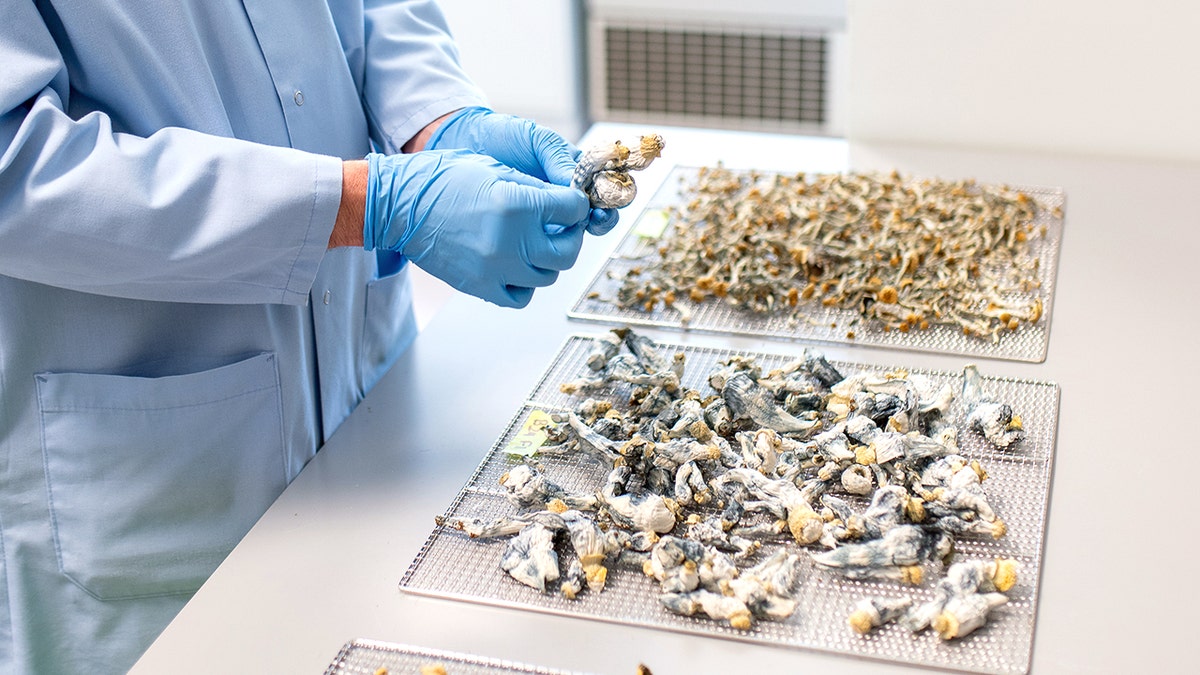
Patients appeared to respond much faster to psychedelics than to traditional antidepressants, the researchers stated. (James MacDonald/Bloomberg via Getty Images)
The new study aimed to explore the longer-term effects of this treatment on 21 of the original trial participants.
Sixty-seven percent reported being in remission from depression five years after treatment, and they also had less anxiety and easier daily functioning.
“The study doesn’t account for naturalistic changes that could have affected their depression in the five years since the main trial.”
For those whose depression came back, many still reported lasting benefits in their attitudes, perspectives and ability to pursue things that were meaningful to them, Davis told Fox News Digital.
“Certainly, more controlled and rigorous study is required, but at least anecdotally, these findings are very interesting, and I am cautiously optimistic about the potential for extended efficacy provided by these types of treatments,” Drysdale added.
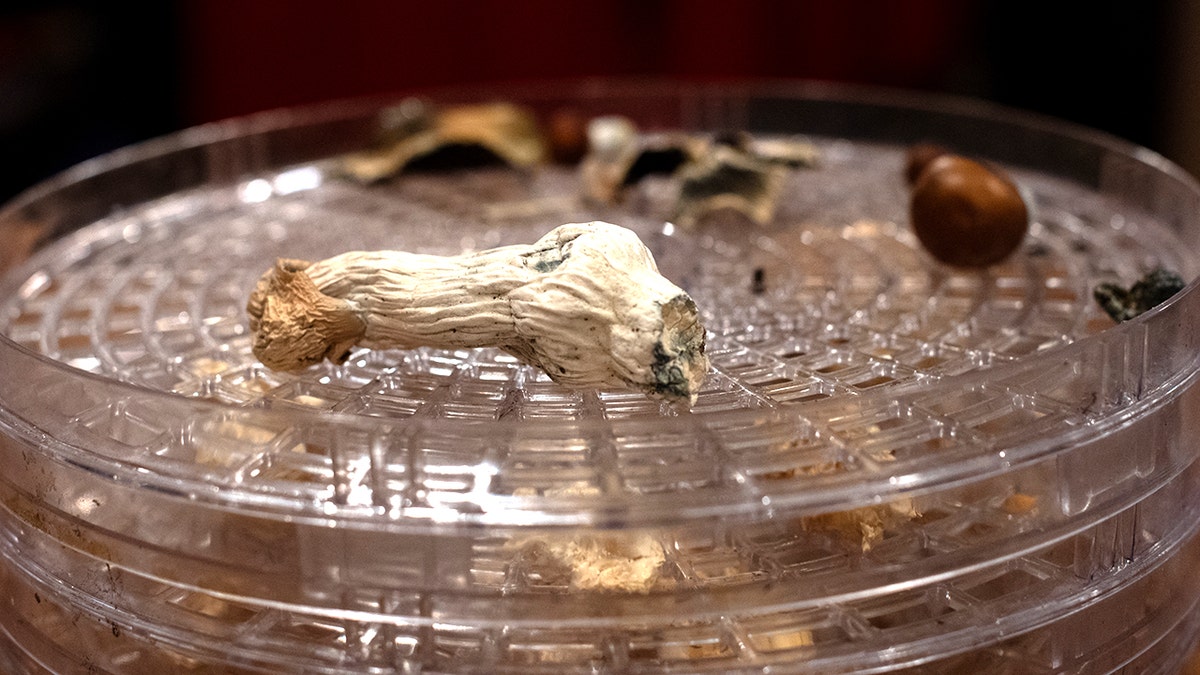
Sixty-seven percent of participants reported being in remission from depression five years after treatment, and they also had less anxiety and easier daily functioning. (JASON CONNOLLY/AFP via Getty Images)
Other factors may have also played a role in the participants’ long-term mental health benefits, such as psychotherapy sessions or other antidepressants, experts agreed.
“The study doesn’t account for naturalistic changes that could have affected their depression in the five years since the main trial, and the sample is not representative of the population of people suffering with depression,” Davis told Fox News Digital.
PARKINSON’S PATIENTS WHO TAKE ‘MAGIC MUSHROOMS’ SEE KEY BENEFITS, STUDY FINDS
Psilocybin has also been explored as a potential treatment for post-partum depression (PPD), which affects as many as one in seven new mothers.
A 2022 study outlined the potential role of psychedelics in PPD cases, finding that psilocybin has been shown to catalyze a sense of “reconnection” in new mothers.
CLICK HERE TO SIGN UP FOR OUR HEALTH NEWSLETTER
“This effect in PPD, by fostering a sense of ‘reconnection’ for the mother, may allow for improved mood and maternal sensitivity toward the infant, which can positively impact maternal role gratification and the mother-infant relationship,” the researchers stated.
In February, Cleveland Clinic reported on an upcoming study that explores single-dosing psilocybin as a way to treat PPD.

Psilocybin has been explored as a potential treatment for post-partum depression (PPD), which affects as many as one in seven new mothers. (iStock)
The trial, now in its second phase, focuses on RE104, a proprietary drug similar to psilocybin.
Study participants will undergo multiple physical and mental health tests.
Potential risks and limitations
Ryan Moss, chief science officer at Filament Health, a clinical-stage natural psychedelic drug development company in Canada, has emphasized the importance of administering psychedelics in a safe setting when treating mental health conditions.
For more Health articles, visit www.foxnews.com/health
“Psychedelic experiences can sometimes feature anxiety, hallucinations and paranoia,” Moss previously told Fox News Digital.
Experts recommend that therapeutic use of psychedelics should be carefully managed by medical experts.
“Some patients using traditional psychedelics have reported experiencing adverse cardiovascular events during clinical trials.”
To mitigate these risks, Moss recommended clinical trial participants receive thorough preparation and monitoring by trained professionals during sessions.
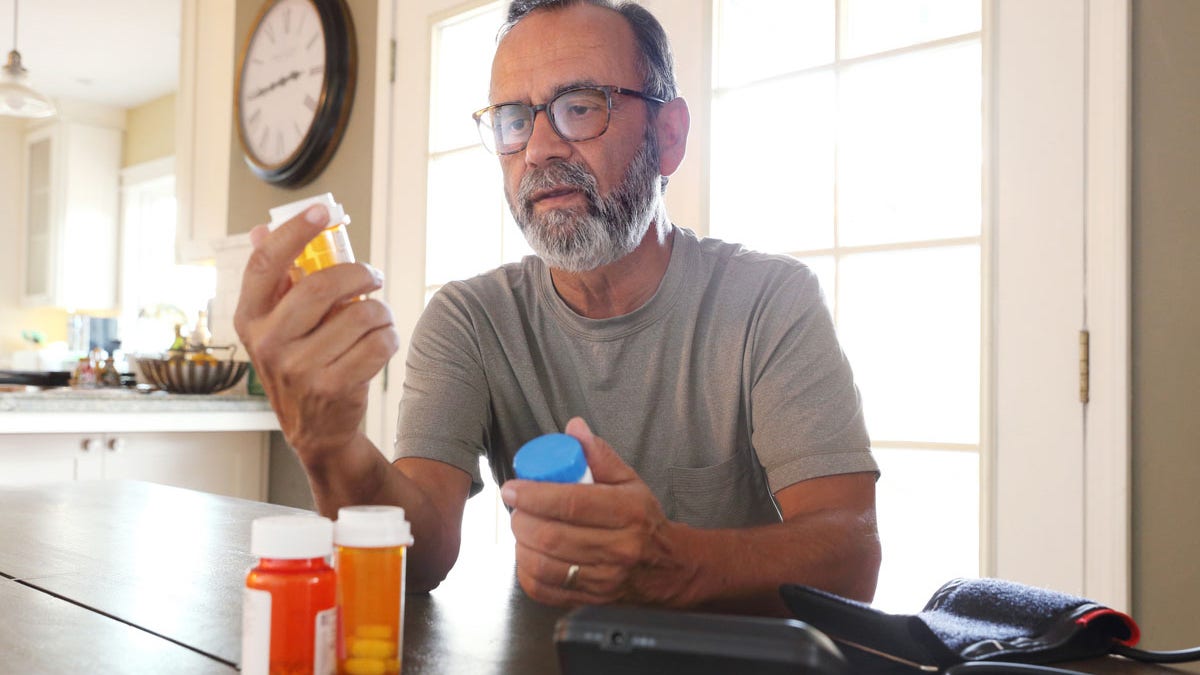
Other factors may have also played a role in the participants’ long-term mental health benefits, noted an expert (not pictured), such as psychotherapy sessions or other antidepressants. (iStock)
Dr. Marc Siegel, clinical professor of medicine at NYU Langone Medical Center and Fox News’ senior medical analyst, previously interviewed two of the country’s top researchers on psychedelics: Dr. Rachel Yehuda, founder and director of the Center for Psychedelic Psychotherapy and Trauma Research at Mt. Sinai in New York, and Dr. Charles Marmar, director of the PTSD research program at NYU Langone.
“They agree there is therapeutic potential if very carefully studied under very strict medical guidance, but there is a huge downside in terms of unregulated recreational uses,” Siegel told Fox News Digital at the time.
“Both doctors see likely therapeutic value to psychedelics if carefully managed by medical experts,” Siegel added.
Melissa Rudy and Angelica Stabile, both of Fox News Digital, contributed reporting.
Health
Experimental drug helps patients lose nearly a quarter of body weight in early trials

NEWYou can now listen to Fox News articles!
An experimental weight-loss medication was shown to help people lose nearly 25% of their body weight in early-stage 1a/2b trials.
The drug, amycretin — developed by Novo Nordisk — works by replicating two hunger hormones — amylin, which regulates appetite and creates a feeling of fullness, and glucagon-like peptide 1 (GLP-1), the same hormone that is used in Ozempic and Wegovy to suppress appetite and boost insulin secretion.
“Amycretin is the first treatment to harness the two distinct biological pathways stimulated by amylin and GLP-1 in a single molecule,” Martin Holst Lange, executive vice president and head of development at Novo Nordisk, previously said in a statement sent to Fox News Digital.
GRANDFATHER’S SIMPLE CHANGES REVERSED PRE-DIABETES DIAGNOSIS THAT LEFT HIM ‘PETRIFIED’
In the study, which included 125 overweight or obese adults, participants who received weekly injections of amycretin lost more weight than those who took a placebo, according to a press release from Novo Nordisk.
Those who got the highest doses (up to 60 mg) lost up to 24.3% pounds after 36 weeks, compared to just 1.1% for the placebo group, per the release.
An experimental weight-loss medication was shown to help people lose nearly 25% of their body weight in early-stage 1a/2b trials. (iStock)
A previous phase 1 trial of the oral (pill) version of amycretin also showed that treatment was “safe and tolerable,” with an “observed reduction in body weight” compared to placebo, the company stated.
Taking the pill once a day led to around 10% weight loss, and those who doubled the dose lost 13%.
YOUR DNA COULD BE STOPPING YOU FROM LOSING WEIGHT, NEW STUDY SUGGESTS
Another benefit the researchers highlighted is that people taking amycretin did not appear to hit a “weight-loss plateau,” continuing to shed pounds as long as they took it.
“The lack of weight loss plateauing indicates the possibility of achieving further weight reductions with extended treatment,” Agnes Gasoirek, a senior clinical pharmacology specialist at Novo Nordisk, wrote in the phase 1 study findings.
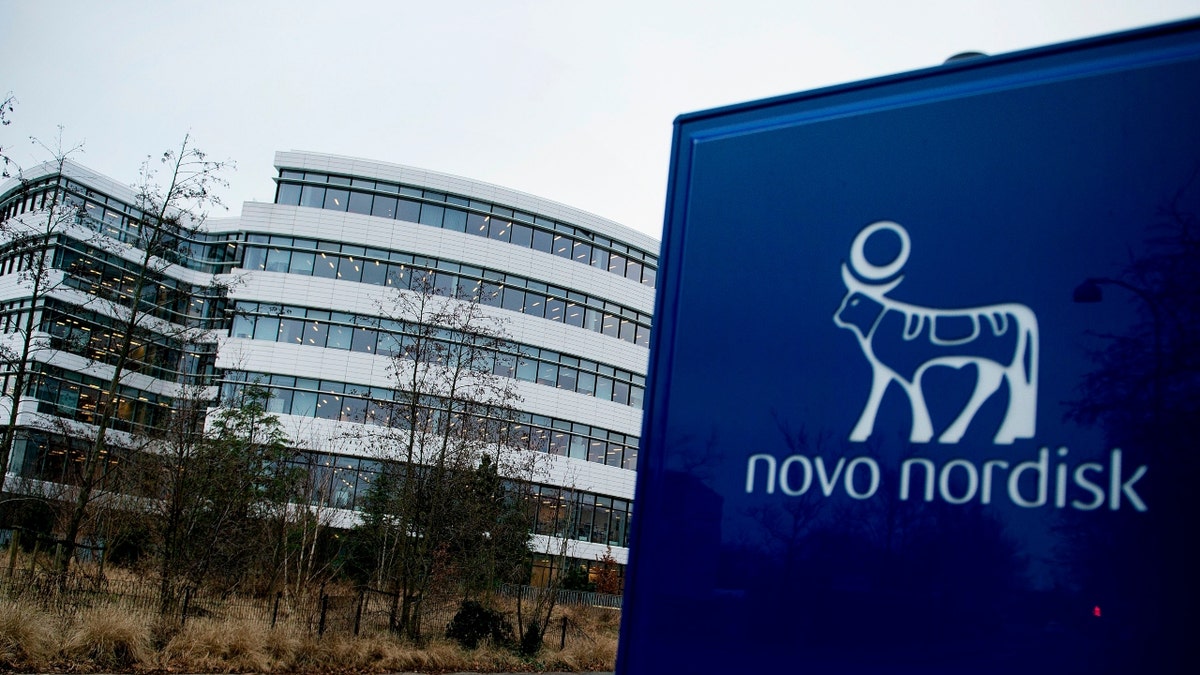
Novo Nordisk presented the latest findings at the American Diabetes Association in Chicago on June 22. ((Photo by LISELOTTE SABROE/Scanpix Denmark/AFP via Getty Images))
Novo Nordisk presented the latest findings at the American Diabetes Association in Chicago on June 22; they were also published in the medical journal Lancet.
“We are pleased with the promising results of amycretin and the feedback from regulatory authorities and are excited to advance both subcutaneous and oral versions of this molecule into phase 3 development for weight management,” said Martin Holst Lange, executive vice president for Development at Novo Nordisk, in the release.
“Amycretin is the first treatment to harness the two distinct biological pathways stimulated by amylin and GLP-1 in a single molecule.”
“These results reflect our robust pipeline in obesity, [and] our focus on progressing scientific innovation and expanding the range of options available to patients and healthcare professionals.”
The most common side effects of amycretin, similar to other GLP-1s, were gastrointestinal symptoms — primarily nausea, vomiting and decreased appetite.
Adverse events were “mild to moderate” in severity, according to researchers. More frequent doses resulted in greater side effects.
It’s important to monitor these side effects closely, experts advise, as GI issues are common among patients with obesity.

“Obesity is a chronic, multifactorial disease that requires a comprehensive, long-term approach,” a doctor said. (iStock)
“While the initial weight-loss outcomes are indeed encouraging, further studies are needed to ensure that the therapeutic benefits consistently outweigh the potential risks, especially with long-term administration,” Dr. Christine Ren-Fielding, director and chief of bariatric surgery at the NYU Langone Weight Management Program, previously told Fox News Digital.
CLICK HERE TO SIGN UP FOR OUR HEALTH NEWSLETTER
While GLP-1-based drugs — including this new experimental pill — may show promising results, Ren-Fielding, who was not involved in the study, emphasized that they’re “not a cure-all for obesity.”
“Obesity is a chronic, multifactorial disease that requires a comprehensive, long-term approach,” she said at the time.
For more Health articles, visit www.foxnews.com/health
“Pharmacological treatments can play a significant role in managing the condition, but they are often most effective when combined with other interventions.”
Next, Novo Nordisk plans to prepare for phase 3 trials of the medication, in both oral and injectable forms, for the management of obesity.
Health
Dental experts reveal 6 essential tips to prevent tooth loss in aging adults
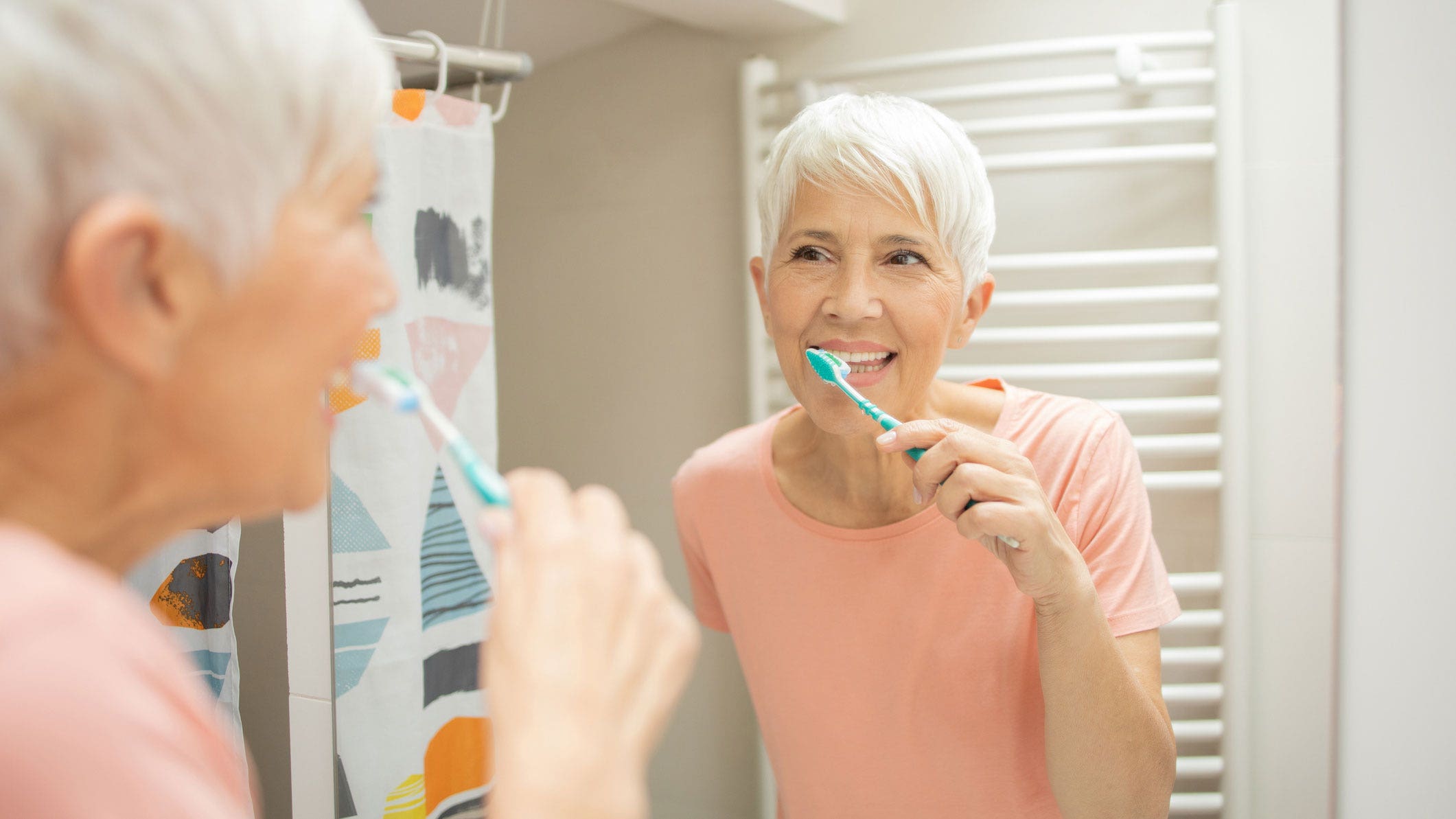
Dentist shares symptoms of ‘chemo mouth’
Dr. Rajiv Saini, a dentist and periodontal specialist from Katy, Texas, discusses one of those lesser-known side effects of chemotherapy and radiation for cancer patients.
NEWYou can now listen to Fox News articles!
Some may assume that losing teeth is just part of growing older.
Around 11% of adults between the ages of 65 and 74 have lost all of their teeth, according to 2020 data from the U.S. Centers for Disease Control and Prevention (CDC) — and that number rises to one in five at age 75 and older.
But according to experts, this isn’t inevitable. Dental professionals shared the following tips to prevent tooth loss and boost overall health.
1. Protect gum health
About two in three adults over age 65 are dealing with some form of gum disease, according to a recently published AARP report.
6 SIMPLE WAYS TO PROTECT YOUR HEARING NOW BEFORE IT’S TOO LATE, ACCORDING TO EXPERTS
Clinical experts cited in the report, including Dr. Uchenna Akosa, assistant professor and director at Rutgers Health University Dental Associates in New Jersey, warn that bleeding gums can signal a much deeper problem.
“Even if you have not lost any teeth, gum disease impairs your ability to chew hard food,” Akosa told AARP. “That will affect your nutrition and can put you at risk of malnutrition in the future.”
If your gums bleed when brushing, or if you notice sensitivity or recession, those are signs to schedule a dental visit. (iStock)
Left untreated, gum disease can also destroy the bones that hold teeth in place and may interfere with nutrition and chewing.
Gum disease is also a source of chronic inflammation in the body, which can contribute to dementia risk, studies have shown. A meta-analysis of about 34,000 people found that older adults who had lost all of their teeth had a 1.4 times greater risk of developing dementia, as cited by AARP.
The publication also points to previous research linking gum disease to other health risks, such as heart attack, stroke and cancer.
Around 11% of adults between the ages of 65 and 74 have lost all of their teeth.
Experts recommend focusing on early prevention. If your gums bleed when brushing, or if you notice sensitivity or recession, those are signs to schedule a dental visit.
Regular professional cleanings and checkups can catch gum problems before they lead to tooth loss or other health effects.
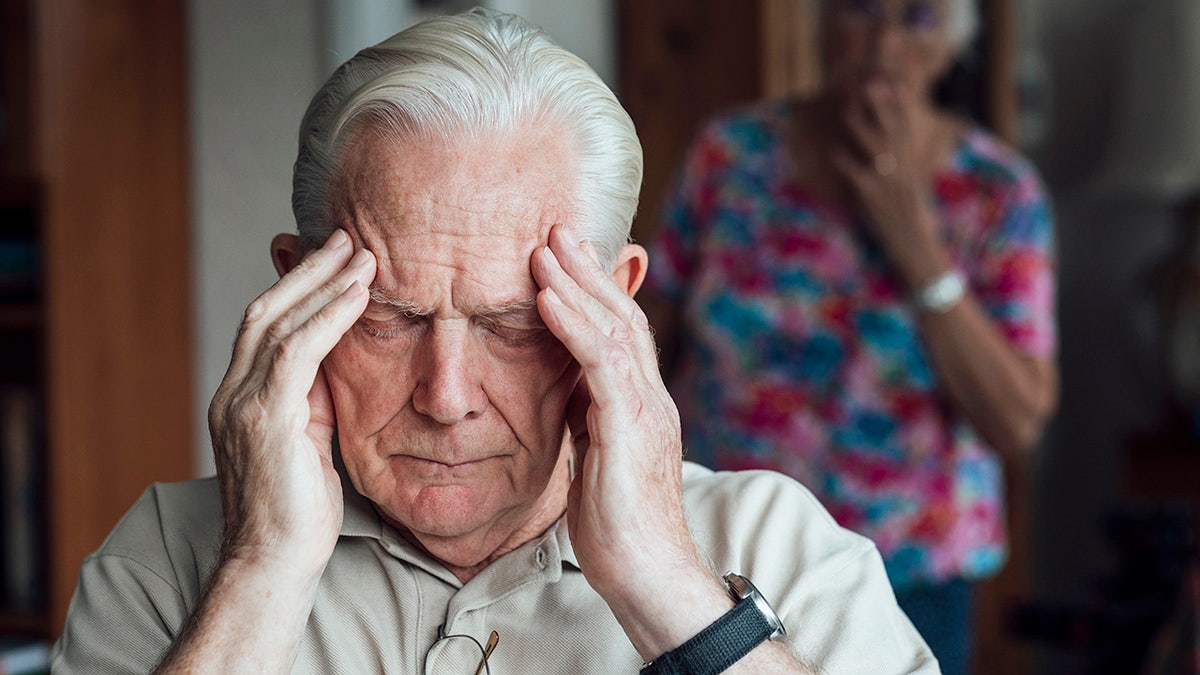
People who had lost all of their teeth had a 1.4 times greater risk of developing dementia, according to the AARP. (iStock)
AARP reports that switching to an electric toothbrush, brushing twice daily for two minutes and using a water flosser are all effective ways to protect gum health.
Dr. David Frey, a cosmetic dentist at Your Perfect Smile in Beverly Hills, California, said that he often recommends water flossers – particularly the Sonic-Fusion by Waterpik – to older patients.
“It’s especially valuable for patients with arthritis, limited mobility or trouble using traditional floss,” Frey told Fox News Digital.
2. Take steps to prevent dry mouth
Saliva plays an essential role in neutralizing acids and protecting tooth enamel, but dry mouth affects nearly six in 10 older adults, according to AARP.
Many common medications — including antihistamines, antidepressants and blood pressure drugs — can reduce saliva production, making the mouth more prone to tooth decay, infection and gum disease, WebMD states.
IS OZEMPIC RUINING YOUR TEETH? WHAT TO KNOW ABOUT IMPACT ON DENTAL HEALTH
To prevent dry mouth, AARP recommends sipping water regularly, rinsing the mouth after eating, asking your dentist about prescription-strength fluoride toothpaste, and using dry mouth rinses like Biotene or Act.
3. Personalize your dental visits
Contrary to the standard six-month checkup rule, AARP notes that dental care schedules should be personalized.
One doctor in the report noted that there’s “nothing magical about a six-month checkup” — some people may only need to go once a year, while others, especially those with chronic conditions, may need more frequent visits.
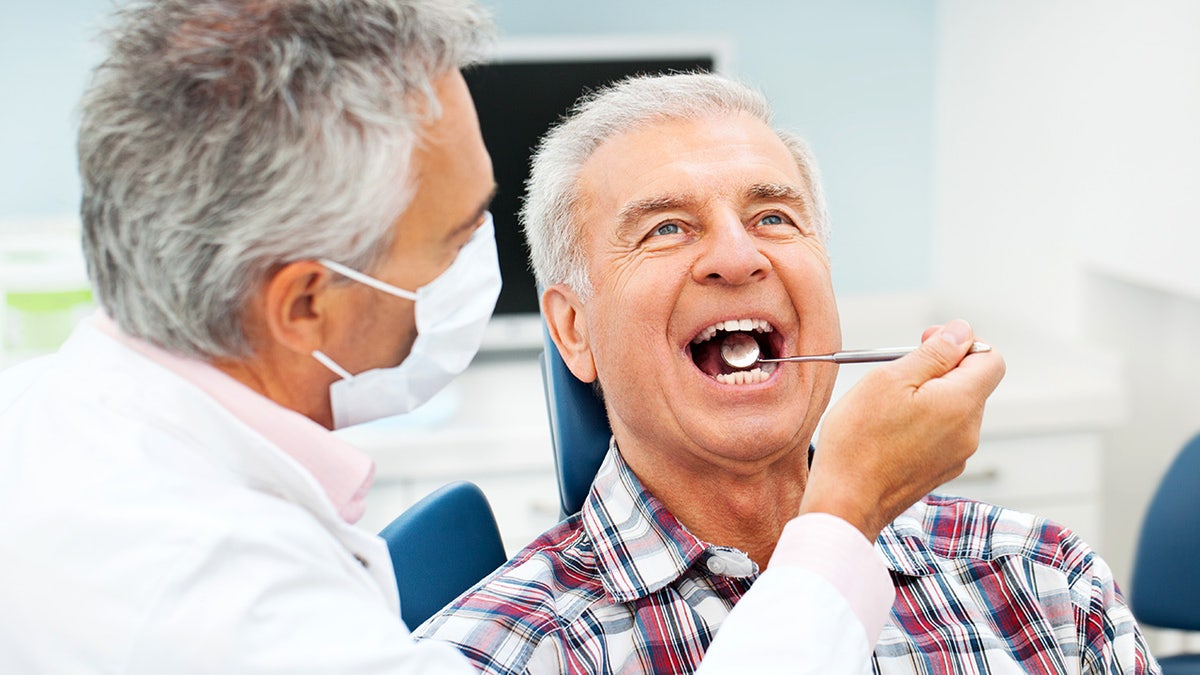
The recommended frequency of dental visits is not one-size-fits-all, according to AARP. Some people may only need to go once a year, while others, especially those with chronic conditions, may need more frequent visits. (iStock)
Oral health issues in older adults often go unnoticed, especially those related to bite alignment, according to Frey.
“Bite-related issues are often an overlooked source of headaches and neck pain,” he told Fox News Digital. “The public simply hasn’t been informed that tension, misalignment and jaw dysfunction can manifest in ways that seem unrelated at first glance.”
Evaluating bite position and jaw health can sometimes reveal the root causes of chronic discomfort, Frey noted.
“When I combine 3D imaging with a close exam of the teeth — worn surfaces, tiny fractures and chipping — it often reveals that the muscles around the head and neck aren’t in harmony with the bite.”
4. Explore options for financial help
Only three in 10 adults over 65 have dental insurance, per the American Dental Association, and Medicare typically doesn’t cover cleanings, fillings or other routine procedures.

Many common medications can reduce saliva production, making the mouth more prone to decay, experts say. (iStock)
This financial gap often leads people to skip dental care altogether, which can cause more serious (and expensive) problems in the future.
AARP suggests looking into dental savings plans, local dental schools or sliding-scale community clinics if coverage is an issue.
5. Adopt healthy habits
Smoking is a major contributor to tooth loss.
CDC data shows that smokers are up to three times more likely to lose all their teeth than non-smokers.
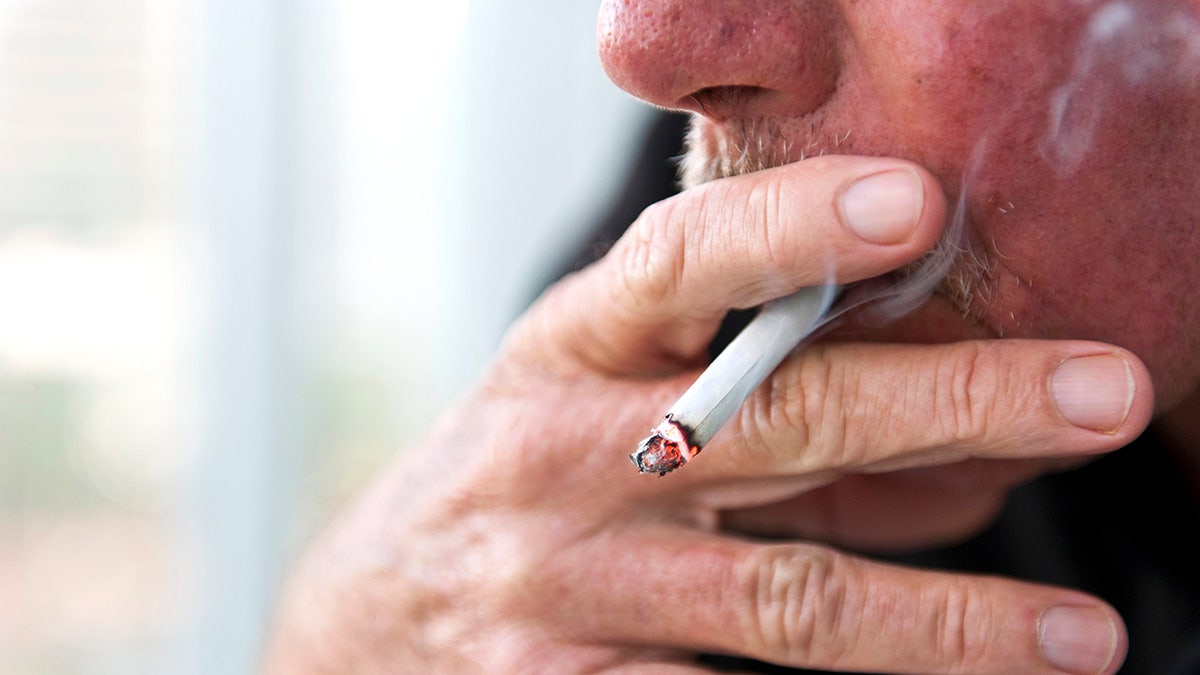
CDC data shows that smokers are up to three times more likely to lose all of their teeth than non-smokers. (iStock)
And while sugary cough drops or hard candies may seem harmless, they can be damaging to tooth enamel over time, experts warn.
Switching to sugar-free gum or candies containing xylitol may help prevent cavities and support better oral health, Akosa told AARP.
6. Restore appearance
One of the biggest misconceptions about aging and dental health is that worn, discolored teeth are something to simply accept, according to Frey.
“It’s not just about revitalizing the teeth — it’s about revitalizing the person.”
“A delicate, thin porcelain veneer can restore the vitality, color and shape your teeth once had, enhancing your smile and overall appearance,” he told Fox News Digital.
“And it’s not just cosmetic — it’s about restoring health, confidence and proper function.”
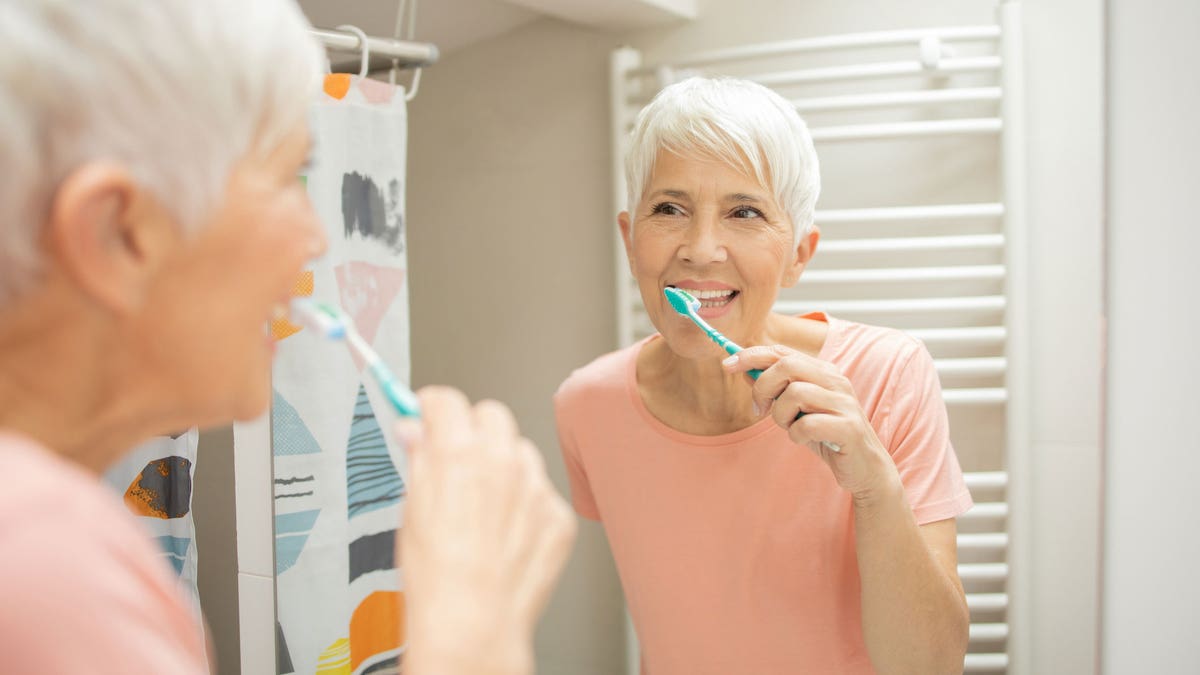
AARP reports that switching to an electric toothbrush, brushing twice daily for two minutes and using a water flosser are all effective ways to protect gum health. (iStock)
According to Dr. Frey, “It’s not just about revitalizing the teeth — it’s about revitalizing the person.”
CLICK HERE TO SIGN UP FOR OUR HEALTH NEWSLETTER
For those looking to brighten their smile, Erin Fraundorf, founder of BOCA Orthodontic and Whitening Studio in St. Louis, recommends seeing a dentist before trying any whitening treatments, per the AARP report.
For more Health articles, visit www.foxnews.com/health
“In-office treatments remain the safest, most effective option, while professional-grade take-home kits and OTC products can be great for maintenance,” Fraundorf said.
-

 Arizona5 days ago
Arizona5 days agoSuspect in Arizona Rangers' death killed by Missouri troopers
-

 News1 week ago
News1 week agoAt Least 4 Dead and 4 Missing in West Virginia Flash Flooding
-

 News1 week ago
News1 week agoOakland County sheriff urging vigilance after shootings of 2 Minnesota lawmakers
-

 Culture1 week ago
Culture1 week agoBook Review: “The Möbius Book, by Catherine Lacey
-

 Technology1 week ago
Technology1 week agoTanks, guns and face-painting
-

 News1 week ago
News1 week agoVideo: Trump's Military Parade Met With Nationwide Protests
-

 World1 week ago
World1 week agoAt least 100 people killed in gunmen attack in Nigeria: Rights group
-

 Mississippi1 week ago
Mississippi1 week agoMiss Mississippi 2025: Who won in the third night of preliminary rounds? Find out here











